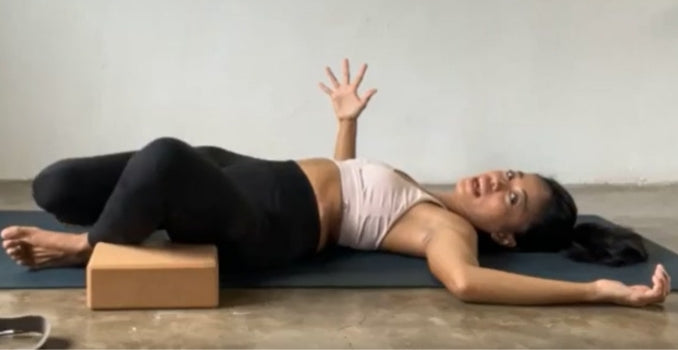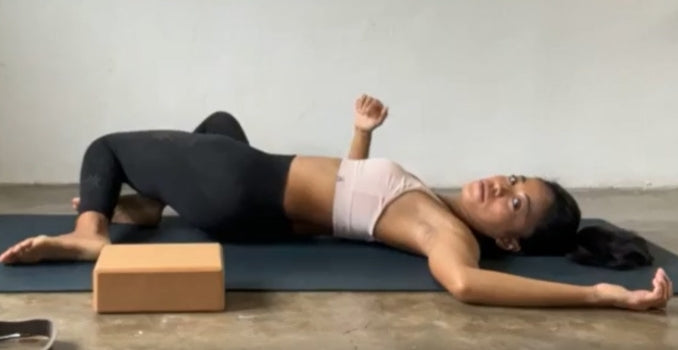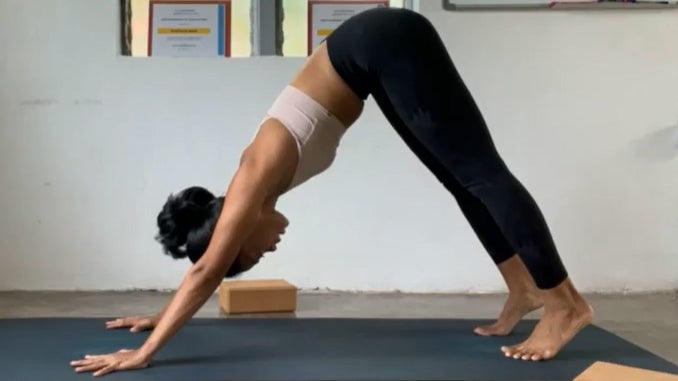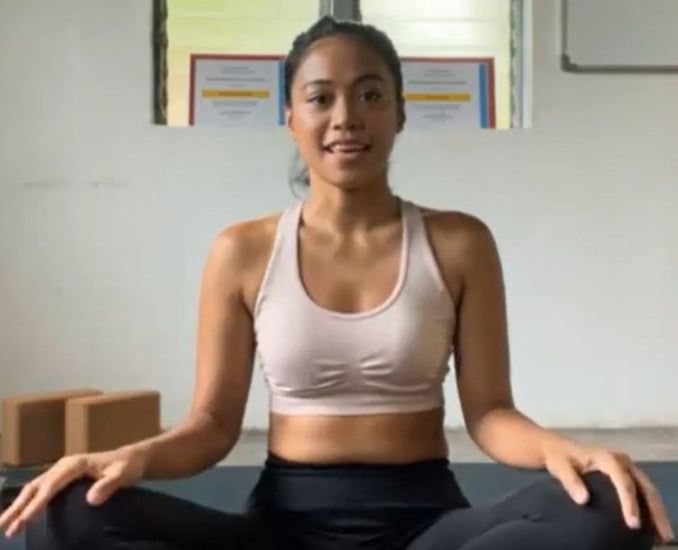
What Causes Lower Back Pain in Females: Common Risk Factors
Lower back (LBP) pain can pose significant challenges for individuals, affecting their daily activities, mobility, and overall quality of life. It often requires medical attention and management to alleviate discomfort and regain functionality. Lower back pain can affect individuals of all ages, including children and also adolescents. According to the World Health Organization (WHO), it is a common experience for most people during their lifetime. The highest prevalence of LBP is typically observed between the ages of 50 and 55, with women being more frequently affected by LBP than men. So, let's dive into the factors what causes lower back pain in females.
What Causes Lower Back Pain in Females
1. Pregnancy
One of the causes of lower back pain in females is pregnancy which often leads to weight gain, a shift in the body's center of gravity, and hormonal changes. These factors can strain the spinal cord and lower back, leading to discomfort and severe pain. As the baby grows, the uterus can pressure the sciatic nerve or nearby structures. The curvature of the spine can also change, impacting the lower back.
2. Menstrual Cycle
Some women experience increased lower back pain during their menstrual periods or with premenstrual syndrome. This can be due to hormonal fluctuations, including prostaglandins, which can cause uterine contractions and muscle tension in the lower back.
3. Gynecological Conditions
Another causes of lower back pain in females is gynecological condition. Persistent lower back discomfort and chronic pelvic pain may result from various conditions, including endometriosis (in which tissue resembling the uterine lining develops outside of the uterus, uterine fibroids (noncancerous growths in the uterus), or pelvic inflammatory disease (an infection of the female reproductive organs). These conditions can affect the uterine lining and result in persistent pain and discomfort.
4. Osteoporosis

Osteoporosis is also one of the causes of lower back pain in females, especially as they age. This condition leads to a weakening of bones, making them more susceptible to fractures. Spinal compression fractures can result in chronic lower back pain.
5. Musculoskeletal Disorders
These conditions can lead to instability, reduced cushioning, and increased friction in the lower back, making individuals more susceptible to chronic lower back pain. Degenerative joint disease (osteoarthritis) leads to the breakdown of cartilage in the spine, causing inflammation and pain in the facet joints. Degenerative disc disease involves the gradual wear and tear of spinal discs, reducing their ability to absorb shock and causing pain due to nerve compression which leads to back pain in females.
6. Work-Related Factors
Certain occupations, such as prolonged sitting, heavy lifting, or repetitive movements, can increase the risk of chronic back pain. Inadequate ergonomic design in the workplace can likewise lead to feelings of discomfort.
7. Psychosocial Factors
Another cause of the lower back pain in females are stress, anxiety, and depression can also affect the perception and experience of pain. These emotional factors can exacerbate or contribute to lower back pain in females.
8. Lifestyle and Physical Activity
Lack of regular exercise, poor posture, and obesity are lifestyle factors that can contribute to lower back pain. Inadequate strength in the abdominal and back muscles can result in a lack of stability in the lumbar spine, resulting in pain in the connecting areas. This can include neck pain, leg pain, and muscle pain.
9. Previous Pregnancy
Women who also have had multiple pregnancies may experience long-term changes in their lower back structure and musculature. During pregnancy, the expansion of abdominal muscles can impact one's core strength and stability.
Yoga for Lower Back Pain

Yoga offers a range of benefits when addressing lower back pain. It enhances flexibility by elongating the muscles and ligaments in the lower back, effectively relieves pain, and also reduces tension in this area. Additionally, yoga exercises and poses significantly strengthen core muscles, providing essential support to the spine and thus mitigating pressure on the lower back.
Moreover, practicing yoga improves posture and heightened body awareness, empowering individuals to maintain a more balanced and spine-friendly position during daily activities. Furthermore, yoga improves blood flow, fosters relaxation, and reduces stress, helping to alleviate muscle tension and relieve severe back pain.
A consistent yoga regimen can enhance overall body strength and flexibility, reducing the likelihood of recurrent lower back pain. Here is a yoga routine that will help you quickly relieve pain in your lower back.
1. Mindful Breathing
 |
2. Knees to Chest
 |
3. Supported Spinal Twist
For this movement, you can place a yoga block, bolster, blanket, or pillow underneath your knee for support and comfort.
Lie on your back on the floor with your knees bent and your feet hip-width apart, relaxing your upper body. Engage your core. Straighten one leg, then twist through your lower back, pelvis, and spine to bring your bent knee across your body towards the yoga block. Hold the position for several deep belly breaths, in through your nose and then out through your mouth.
You can hold your right knee with your left hand to put pressure on it, and to ease this pose, you may bend the opposite leg for comfort.
 |
Counter Stretch: Reclined Windshield Wiper
Lie on your back on the floor with your knees bent and your feet hip-width apart, relaxing your upper body. Engage your core, and then rotate your lower body to drop your knees to one side. Return to the middle position and then repeat the movement on the opposite side.
 |
 |
4. Hamstring Stretch with Strap
For this exercise, use a strap, resistance tubing, or a towel that is long enough to wrap under your foot.
Lie on your back on the floor with your knees bent and feet flat on the floor, relaxing your upper body. Wrap the middle of the strap under the bottom of one foot and raise your leg up towards the ceiling with your toes pointing toward you. Gently pull on the strap to intensify the stretch. Keep your opposite leg bent or straight, depending on your comfort level. Hold the position for several deep belly breaths, in through your nose and then out through your mouth. Relax and then return to the starting position. Repeat the movement on the opposite side.
In addition, to intensify this stretch, pull the strap further to draw your leg closer to the body
 |
5. Modified Plank Pose
Begin in a 4-point position, with your hands underneath your shoulders and your knees underneath your hips. Engage your core. Take a deep breath and then extend one leg backward, stacking the heel over your toes as you activate your quads, hamstrings, and your inner thigh pressed in. Depending on your comfort level, progress the movement by pressing into your hands as you push your heel downward, maintaining a good alignment with your head, shoulders, hips, and back leg. Hold the position for 5 deep belly breaths, in through your nose and then out through your mouth. Return to the starting position and then repeat the movement on the opposite leg.
 |
6. Downward Dog
Begin in a 4-point position with your knees below your hips and your hands beneath your shoulder. Engage your core and push back with your arms straightening your legs as you lift your hips upwards. Hold this position for several deep belly breaths, in through your nose and then out through your mouth.
 |
7. Downward-facing Dog with Toe Raises
From the Downward Dog position, engage your core and raise to your toes on both feet. Keep your gaze downward, or try to gaze towards the belly as you tuck your chin in. Hold the position for several deep belly breaths through your nose and then your mouth.
 |
8. Downward-facing Dog with Bent Knees
From the Downward-Facing Dog with Toe Raises, slowly bend both knees as you push further with your arms, lengthening your tailbone as you keep your spine straight. Hold this position for several deep belly breaths in through your nose and then out through your mouth.
 |
9. Supported Lunge
From the Downward-Facing Dog with Bent Knees. Take a big step forward with one foot, keeping your toes pointing straight ahead. Engage your core, plant your hands on the floor, and shift your hips forward, squeezing your pelvic floor muscles and tilting your pelvis back. Hold this position for several deep belly breaths, in through your nose and then out through your mouth.
Moreover, to ease this pose, you may use yoga blocks or pillows for elevation and support.
 |
Variation 1- Low Lunge
From the Supported Lunge position, extend your back leg as you untuck the back foot. Engage your core and shift your hips forward, squeezing your pelvic floor muscles as you tilt your pelvis back. Hold the position for 5 deep belly breaths, in through your nose and out through your mouth. Relax and then return to the starting position. Repeat the movement on the opposite side.
 |
10. Half Split
From the Low Lunge position, flatten the yoga blocks to the lowest setting. Press into your front foot to straighten your leg, keeping your toes pointing straight ahead. Hold this position for 5 belly breaths, in through your nose and then out through your mouth. Relax and return to the starting position. Repeat the movement on the opposite side.
 |
11. Child’s Pose
Begin in a 4-point position with your hands beneath your shoulders and your knees under your hips. Tighten your abdominal area and shift your hips back to your feet while extending both arms overhead. Lower your head to the floor and relax your mid-back area for a light stretch. Hold this position for several deep belly breaths, in through your nose and then out through your mouth.
 |
12. Supported Malasana
For this exercise, use a yoga block, stack of books, or anything stable to support your pelvis in a forward position.
Begin in an upright standing position with your feet wider than shoulder-width apart, maintaining good alignment in your upper body. Bend your knees and hinge through your hips to move into a deep squat. Rest your seat on the yoga block as you press your elbows between your knees, pressing your palms together in a prayer position at chest height. Ensure that you distribute your weight evenly across both heels while keeping your spine straight. Hold this position for several deep belly breaths in through your nose and then out through your mouth.
 |
13. Happy Baby
Lie on your back on the floor with your knees bent and feet flat on the floor, relaxing your upper body. Lift your legs and hold your toes with each hand, pulling down toward the shoulders with your knees wide apart. Hold the position for several deep belly breaths, in through your nose and then out through your mouth.
Furthermore, to intensify this exercise, you can gently rock your lower spine from side to side.
 |
14. Mindful Breathing
Begin in an upright sitting position with your legs crossed in front of your body, maintaining good alignment with your head, shoulders, and hips. Place both hands on your knees. Engage your core and gaze at a focal point or you may close your eyes and relax your shoulders. Then, mindfully take controlled breathing as you bring awareness to your body and your surroundings. Hold the position for several deep belly breaths, in through your nose and then out through your mouth.
 |
Conclusion
Addressing lower back pain is crucial for their well-being, as it can significantly impact daily life and activities. Women, frequently balancing numerous roles and responsibilities, are especially susceptible to experiencing this discomfort. Yoga can help improve flexibility, strengthen core muscles, and promote relaxation, all of which can alleviate lower back discomfort.
Nevertheless, women must seek guidance from a healthcare professional before commencing a fresh exercise routine, particularly if they have underlying medical conditions contributing to their lower back pain. In cases where medical conditions are a factor, physical therapy can also provide specialized guidance and exercises to address the root causes of lower back pain and help women regain mobility and quality of life safely and effectively.
Move your back without fear when pain hits, overcome pain, and go back to living your life. Walk, run, wake up rested, and have fun again!
Eliminate your low back pain, once and for all. Invest in your health with these ultimate yoga poses.

